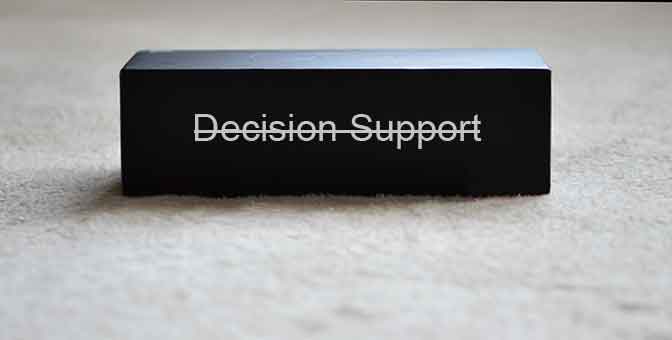
Decision Support should *not* be a “Black Box”
Usually when I meet people who ask me what business I’m in, I tell them that I build mathematical models to be incorporated in decision support tools that enable companies to make better decisions. They then often reply, “oh, you build those black boxes???” Last Friday night when my wife and I went out to dinner, we went through an experience that is a perfect example of the difference between a black box and a decision support tool.
We had made a reservation for dinner in Sausalito and were immediately seated at a table positioned between two pillars. I couldn’t sit down without sliding my chair out diagonally since there wasn’t sufficient room to pull it straight back. When we asked about moving to one of the other empty tables, we were told that they were all reserved. We said that we had a reservation too, and were told that the scheduling software had precisely scheduled out which table should be assigned to which party and that moving us would cause a problem. We asked if we needed to request a particular section when we made a reservation and were told “No, this is how the computer assigned you”. We elevated our request to the restaurant manager who accommodated us.
It’s clear that the host was working with scheduling software that was a “black box” approach. It had not been developed to facilitate the hosts in accommodating reasonable requests of their customers but rather to create a static seating plan. Hence, it had become an obstacle. True decision support tools must be developed with the real-life needs of the users in mind, and not to constrain users from making and implementing the right decisions.
